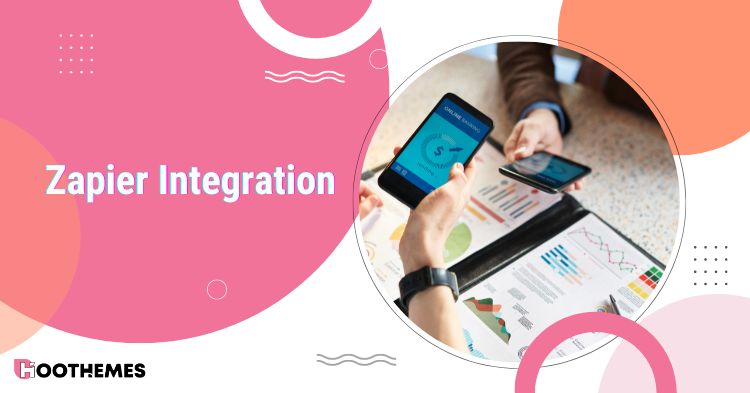In today’s fast-paced digital landscape, efficiency and productivity are paramount for businesses and individuals alike. One powerful tool that has emerged to streamline workflows is Zapier, a platform that allows you to automate tasks between different applications effortlessly. With the Zapier integration, users can leverage the capabilities of various applications to create seamless workflows that save time and reduce manual effort.
By connecting apps through automation with Zapier, users can significantly enhance their planning and management. Whether you are a small business owner, a marketer, or a project manager, understanding how to utilize Zapier integration can transform the way you work and help you achieve more with less effort.
What is Zapier?
Zapier is an online automation tool that connects over 2,000 apps, allowing users to automate repetitive tasks without needing coding skills. The core concept revolves around creating “Zaps,” which are automated workflows that trigger specific actions in one app based on events in another. This flexibility makes Zapier a powerful resource for managing tasks across a wide range of applications, from project management tools to communication platforms.
For instance, you could set up a Zap that automatically saves email attachments to your cloud storage or sends notifications to your team when a new lead is added to your CRM. The possibilities are virtually endless, making Zapier a go-to solution for enhancing productivity.
Why Use Zapier Integration?
Utilizing the Zapier integration offers several benefits for businesses and individuals:
- Time Savings: By automating routine tasks, you free up valuable time that can be redirected towards more strategic initiatives. This time-saving aspect is particularly advantageous in a busy work environment.
- Error Reduction: Manual data entry can lead to errors and inconsistencies. With Zapier, automated workflows minimize the risk of human error, ensuring that your data remains accurate and reliable.
- Enhanced Collaboration: Automation with Zapier can facilitate better communication between teams. For example, you can automate notifications that keep team members informed about project updates or changes, fostering a more collaborative work environment.
- Scalability: As your business grows, so do your operational needs. Zapier allows you to scale your processes effortlessly by adding new integrations and automations without the need for extensive training or resources.
How to Get Started with Zapier Integration
Getting started with Zapier integration is straightforward. Follow these steps to begin automating your workflows:
- Create a Zapier Account: If you haven’t already, sign up for a Zapier account. The platform offers various pricing plans, including a free tier that allows you to explore basic functionalities.
- Choose Your Apps: Identify the applications you want to connect. Whether it’s a project management tool like Trello, a CRM like Salesforce, or a messaging platform like Slack, Zapier supports a vast array of integrations.
- Set Up Your Zap: Once you’ve selected your apps, it’s time to create your Zap. You’ll start by choosing a trigger—an event that initiates the automation. For example, a new lead added to your CRM could be the trigger.
- Define Actions: After selecting the trigger, determine what action you want to take in the second app. For instance, you may want to send an email notification or update a spreadsheet with the lead’s details.
- Test and Launch: Before finalizing your Zap, it’s essential to test the workflow to ensure it functions as intended. Once you’re satisfied with the setup, activate your Zap, and let the automation work for you.
Using the Translate API with Zapier
For those in need of translation services, the Translate API with Zapier offers a unique solution. This integration enables users to automate translation tasks seamlessly within their existing workflows. Here’s how it works:
● Streamline Content Translation: If your business deals with international clients or multilingual content, the Translate API allows you to automate the translation of documents, emails, or chat messages. By integrating this API with your preferred applications, you can ensure that your content is readily available in multiple languages.
● Create Multilingual Workflows: With the Translate API and Zapier integration, you can set up workflows that automatically translate incoming messages or documents based on the recipient’s preferred language. This capability enhances communication and ensures that language barriers are minimized.
● Customizable Automation: The Translate API allows for customization, enabling you to specify the source and target languages. This flexibility is particularly beneficial for businesses operating in diverse markets, as it ensures that communication remains effective across different regions.
Best Practices for Using Zapier Integration
To maximize the benefits of Zapier integration, consider the following best practices:
● Start Small: If you’re new to Zapier, begin with simple Zaps to familiarize yourself with the platform. As you gain confidence, you can gradually build more complex automations.
● Monitor Your Zaps: Regularly review your Zaps to ensure they are functioning correctly. Zapier provides insights and notifications for any errors, allowing you to troubleshoot issues promptly.
● Leverage Templates: Zapier offers a library of pre-built templates for common workflows. Explore these templates to quickly set up integrations that suit your needs.
● Stay Organized: Keep your Zaps organized by naming them descriptively and categorizing them based on function. This organization makes it easier to manage multiple Zaps and track their performance.
FAQs
1. What Is a Zap in Zapier?
A Zap is a term used in Zapier to describe an automated workflow that connects apps together. It consists of a trigger (an event that starts the automation) and one or more actions (tasks performed automatically in response to the trigger).
2. Do I Need Coding Skills to Use Zapier?
No, Zapier is designed to be user-friendly and does not require coding skills. Its interface allows users to set up automation through a simple visual builder, making it accessible for individuals and businesses alike.
Conclusion
The Zapier integration is a powerful tool that can significantly enhance productivity and streamline workflows across various applications. By harnessing the capabilities of automation with Zapier, individuals and businesses can save time, reduce errors, and improve collaboration.
Whether you are looking to automate simple tasks or implement complex workflows, Zapier offers the flexibility and functionality needed to optimize your processes. For more information on how to leverage Zapier and explore other integrations, visit Translate.com. Embrace the power of automation and transform the way you work with Zapier today!


![Read more about the article 21 Best YouTube Video Downloaders in 2023 [Free & Paid]](https://www.hoothemes.com/wp-content/uploads/2023/04/1-1-300x157.jpg)


